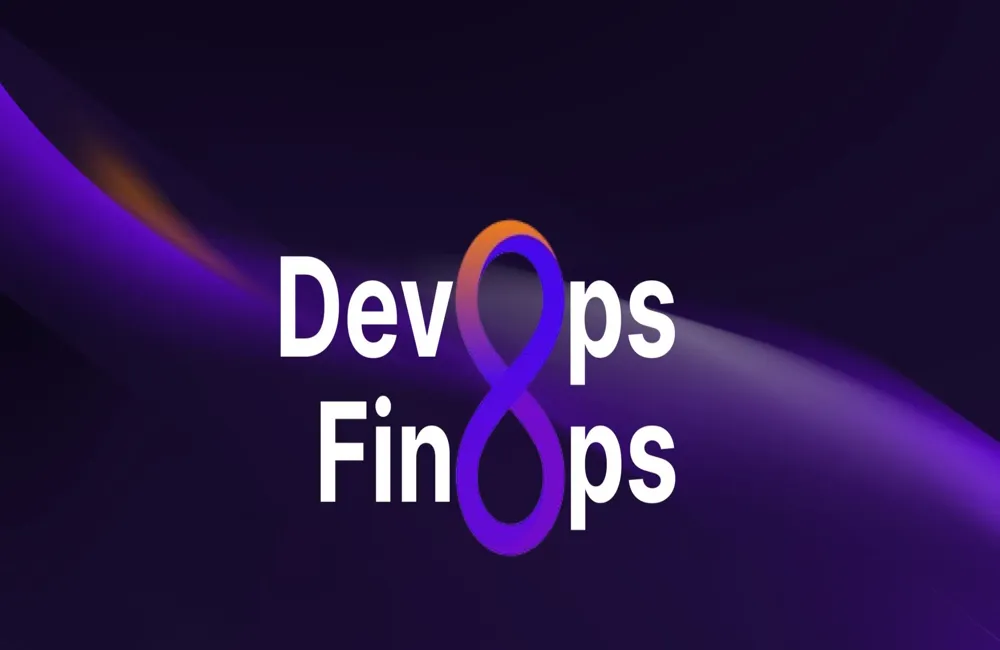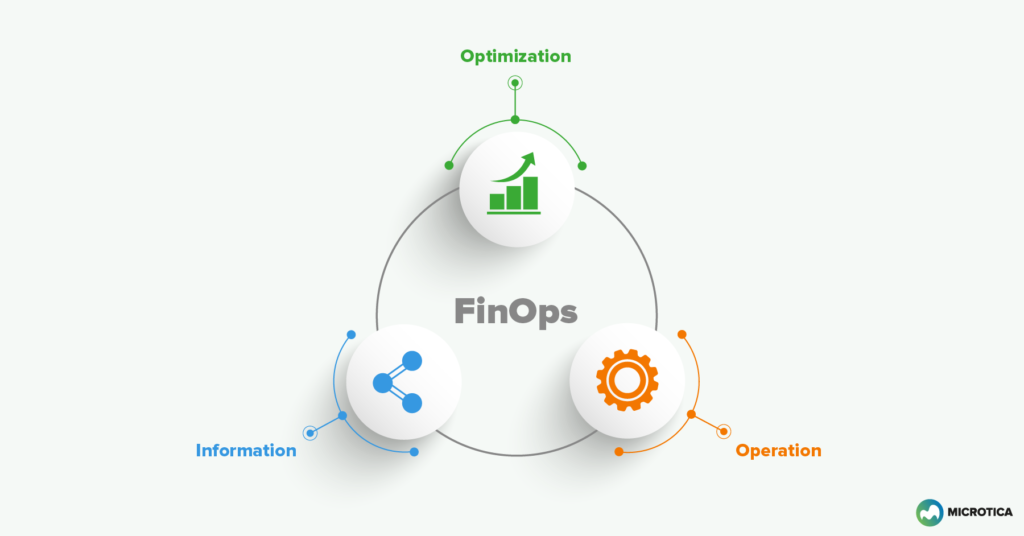
How FinOps and DevOps Work Together

Introduction: The Cloud Cost Paradox
The cloud has redefined how startups and scale-ups build products, enabling teams to spin up environments instantly and ship features at a blistering pace. Yet, the same flexibility and speed often lead to silent killers: wasted resources, untracked infrastructure sprawl, and runaway bills.
It’s not uncommon for growing teams to discover that 30–40% of their cloud spend is on idle, orphaned, or oversized resources. Finance flags overspending too late, and engineers, disconnected from cost accountability, continue to deploy without visibility into the financial impact.
This is where FinOps and DevOps intersect. By weaving cost governance into CI/CD pipelines, teams can enforce budgets, kill unused resources, and detect cost anomalies during deployment automatically, aligning engineering speed with financial health.

What is FinOps, and Why Does It Matter?
FinOps (Financial Operations) is the practice of managing cloud spending in a disciplined, continuous manner, bringing financial accountability to the fast-moving world of cloud-native engineering.
Traditionally, cost management is reactive:
- Finance sees the bill after the month closes.
- Engineers find out weeks later they overspent.
- There is no easy attribution of costs to teams or features.
FinOps changes this by emphasizing:
✅ Visibility: Real-time insight into who is spending what, and why.
✅ Optimization: Actively reducing waste and rightsizing resources.
✅ Governance: Enforcing policies that align with business budgets.
But FinOps alone can only highlight the problem. To solve it at the source, it needs to integrate directly into DevOps workflows where infrastructure and resources are created.
DevOps: Speed Without Guardrails Can Be Expensive
DevOps and infrastructure-as-code (IaC) practices empower engineers to automate deployment, infrastructure provisioning, and scaling. Tools like Terraform, Kubernetes, and GitOps workflows enable teams to deliver rapidly, spinning up compute, storage, and networking with a single commit.
But this power can be a double-edged sword:
- Temporary test environments are left running indefinitely.
- Over-provisioned instances due to unclear workload needs.
- Duplicate or abandoned resources from failed deployments.
Without cost guardrails, DevOps pipelines can scale cloud waste as quickly as they scale product delivery.
Why FinOps and DevOps Need Each Other
FinOps needs DevOps to operationalize cost policies, while DevOps needs FinOps to ensure innovation doesn’t drain the budget. Together, they enable:
✅ Infrastructure accountability: Resources deployed via pipelines are tagged, tracked, and aligned with cost policies.
✅ Automated cleanups: Idle or orphaned resources are detected and terminated automatically.
✅ Budget enforcement: Teams receive real-time feedback on spending against their allocated budgets.
✅ Continuous improvement: Cost anomalies are caught early, enabling engineers to adjust architecture or deployment patterns proactively.
This FinOps + DevOps alignment turns cloud cost management from a reactive process into a continuous, automated practice.
Building Automated Cloud Cost Governance in CI/CD: Deep Dive
Below are actionable, in-depth strategies to bring FinOps into your DevOps workflows:
1. Tie Infrastructure-as-Code to Cost Policies
Context:
Infrastructure-as-code tools like Terraform enable engineers to define cloud resources in code, ensuring consistent, repeatable environments across teams. However, these tools can also inadvertently deploy costly resources if no checks are in place.
Solution:
Using Terraform Sentinel (or Open Policy Agent), teams can write policy-as-code to enforce cost-conscious guardrails:
✅ Restrict instance types to cost-effective options (e.g., t3.medium instead of m5.4xlarge for test environments).
✅ Prevent deployments in expensive regions unless justified.
✅ Enforce resource tagging for cost attribution before approval.
✅ Block the provisioning of high-cost services without additional review.
These policies run during terraform plan or apply, preventing expensive or non-compliant deployments before they happen, and reducing financial surprises.
2. Auto-Kill Idle and Orphaned Resources
Context:
Dev/test environments, ephemeral workloads, and manual overrides often leave behind unused resources consuming CPU, storage, and networking.
Solution:
Automate detection and cleanup:
✅ Use TTL (time-to-live) tagging on non-production resources, enabling Lambda functions or Kubernetes CronJobs to auto-delete them after expiry.
✅ Set up idle detection scripts monitoring CPU and memory usage over defined windows, terminating or scaling down underutilized workloads.
✅ Use tools like Cloud Custodian to enforce cleanup policies automatically across AWS, Azure, and GCP.
This workflow ensures that resources live only as long as they are needed, converting potential waste into reclaimed budget for high-value engineering work.
3. Limit Cloud Spend Per Team and Environment
Context:
Without cost attribution, it’s impossible to hold teams accountable for cloud spending, leading to the “tragedy of the commons” where everyone overspends, assuming someone else is monitoring.
Solution:
With OpenCost and Kubecost, you can:
✅ Allocate cloud spend to teams, projects, or environments using labels and namespaces in Kubernetes.
✅ Visualize real-time cost dashboards to give engineers feedback on their spending.
✅ Trigger alerts when teams exceed predefined budget thresholds, enabling corrective action before bills spiral.
By making costs visible and actionable, you transform budgeting from a finance-only concern to a shared engineering responsibility.
4. Run Cost Anomaly Detection During Deployment
Context:
Deployments can cause sudden, unexpected cost spikes (e.g., a misconfigured auto-scaler provisioning hundreds of instances).
Solution:
Integrate cost anomaly checks in CI/CD pipelines:
✅ Estimate cost deltas between the current and planned states during terraform plan.
✅ Pause or block deployments that exceed predefined cost thresholds.
✅ Use machine learning-powered anomaly detection (from AWS Cost Anomaly Detection or GCP Recommender) to catch spikes immediately.
This approach catches costly misconfigurations early, before they become end-of-month surprises.
Practical Tools for FinOps-Driven DevOps
Here’s how practical tooling supports these strategies:
🔹 Terraform Sentinel / Open Policy Agent: Enforce cost-related policies at deployment time, ensuring every IaC change complies with financial guidelines.
🔹 OpenCost and Kubecost: Provide detailed, real-time Kubernetes cost monitoring, allocation, and optimization recommendations.
🔹 Cloud Custodian: Policy-driven governance for cloud accounts to clean up unused resources automatically.
🔹 AWS Budgets, GCP Budgets, Azure Cost Management: Native services to enforce budget alerts and track cloud spend efficiently.
🔹 0xMetaLabs FinOps Tooling: Bespoke integrations that embed FinOps policies directly into client CI/CD pipelines, customized to align with engineering workflows.
Real-World Impact for Startups and Scale-Ups
For fast-growing companies, cloud overspend isn’t a minor leak it can be a hemorrhage. Without cloud cost governance, the velocity that DevOps enables can become unsustainable.
By aligning FinOps with DevOps:
✅ Startups extend their runway by controlling cloud waste.
✅ Scale-ups maintain delivery velocity without blowing budgets.
✅ Teams gain confidence in building fast while remaining financially disciplined.
At 0xMetaLabs, we’ve observed clients cut cloud waste by 25–40% within months by integrating FinOps checks into their CI/CD processes, freeing budgets for critical product investments.
How 0xMetaLabs Helps Align Business Outcomes with Engineering Velocity
At 0xMetaLabs, we believe DevOps should drive business value, not just deployment speed.
We help engineering teams:
✅ Build infrastructure-as-code pipelines with embedded policy checks.
✅ Integrate real-time cost feedback into GitOps workflows.
✅ Automate resource cleanup across cloud environments.
✅ Establish cost accountability dashboards for every engineering team.
We ensure that engineering can ship fast without shipping financial surprises to the CFO’s inbox.
Conclusion: The Path Forward
Runaway cloud costs aren’t inevitable. By bringing FinOps principles into DevOps practices, organizations can achieve cloud cost governance without sacrificing the speed and flexibility that the cloud promises.
For startups and scale-ups where every dollar and every day matters, FinOps + DevOps is not just good practice; it is a competitive advantage.
Cloud waste is silent but deadly. By enforcing cost policies during CI/CD, automatically cleaning up unused resources, and giving engineers visibility into the financial impact of their actions, you ensure your cloud spend fuels growth, not waste.
Next Steps
If you’re ready to bring business alignment to your DevOps practices while maintaining engineering momentum, let’s talk.
0xMetaLabs can prepare a custom FinOps + DevOps roadmap for your team, ensuring every deployment aligns with your financial goals without slowing your innovation.
You May Also Like
How Real-Time Data is Powering Industrial IoT
Ut enim ad minim veniam, quis nostrud exercitation ullamco laboris nisi ut aliquip ex ea commodo con
Why SMEs are the new Prime Targets for Cybercrime
Ut enim ad minim veniam, quis nostrud exercitation ullamco laboris nisi ut aliquip ex ea commodo con
Why Modular Data Centers are the Future of Scalable Computing
Ut enim ad minim veniam, quis nostrud exercitation ullamco laboris nisi ut aliquip ex ea commodo con




